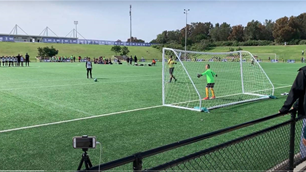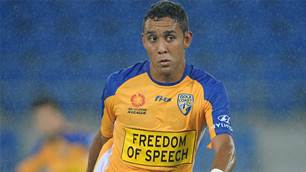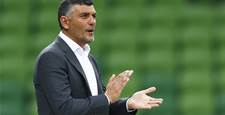QUEENSLAND Roar midfielder Hyuk-Su Seo says the A-League's salary cap should be abolished for the good of the league.
Speaking to a Swiss-based website this week, the 34-year-old South Korean said the A-League would improve by having better players attracted to clubs in Australia.
To do this, he says, means jettisoning the FFA's financial restraints now.
“Personally, I think the salary cap is hindering the league's progress to becoming a better competition," he said.
"If the teams are able to bring in more talented players into their squads, the existing players can learn from them and improve their skills.
“But the salary cap makes it difficult for teams to keep those talented locals to stay in the league or bring in those players from overseas.
"Also the players who deserve more for their contributions to the teams are not getting what they deserve.
“The stadiums, the fans and the grass make A-League a very attractive league for any player in the world but the salary cap is a big barrier.”
The A-League salary cap increased from $1.6 million to $1.8 million for this season, the competition's third campaign, in order to allow for increased squad sizes. Clubs are allowed to register up to 23 players.
The cap is in place to help ensure no clubs over spend and possibly go bust. In the old NSL, clubs like Northern Spirit and Carlton - which didn't have a salary cap restraint - ultimately paid the price for overspending.
The former Seongnam Ilhwa Chunma midfielder heaped praise on Queensland Roar and said he enjoyed the differences in life as a footballer in the K-League as opposed to the A-League.
He added: “When I first arrived here in Australia, the locals here all told me that soccer would never succeed in Australia.
"Already well established sports such as rugby and cricket were very popular so many thought that they would be no room for soccer in the sphere of Australian sports.
“But look at our attendance records. Even if there is a cricket match in Brisbane on the same day, we consistently get more than 10,000 spectators or more coming to watch soccer.
"In terms of attendance records, A-League performs much better than the K-League. I was in for a big surprise when I first came here.
"In Korea, the players see their coaching staff as their superior authority and nothing less. We used to say that we should never even make a step onto their shadows.
“But here, the player fiddle around with their manager's hair and put their arms around the coach's shoulders.
"You also don't feel the same kind of authority coming from the coaching staff as well. They are like friends in the neighbourhood if you like.
“In Korea, even when you meet your manager or coaches outside the training ground, they are not as approachable as they are here.”
To do this, he says, means jettisoning the FFA's financial restraints now.
“Personally, I think the salary cap is hindering the league's progress to becoming a better competition," he said.
"If the teams are able to bring in more talented players into their squads, the existing players can learn from them and improve their skills.
“But the salary cap makes it difficult for teams to keep those talented locals to stay in the league or bring in those players from overseas.
"Also the players who deserve more for their contributions to the teams are not getting what they deserve.
“The stadiums, the fans and the grass make A-League a very attractive league for any player in the world but the salary cap is a big barrier.”
The A-League salary cap increased from $1.6 million to $1.8 million for this season, the competition's third campaign, in order to allow for increased squad sizes. Clubs are allowed to register up to 23 players.
The cap is in place to help ensure no clubs over spend and possibly go bust. In the old NSL, clubs like Northern Spirit and Carlton - which didn't have a salary cap restraint - ultimately paid the price for overspending.
The former Seongnam Ilhwa Chunma midfielder heaped praise on Queensland Roar and said he enjoyed the differences in life as a footballer in the K-League as opposed to the A-League.
He added: “When I first arrived here in Australia, the locals here all told me that soccer would never succeed in Australia.
"Already well established sports such as rugby and cricket were very popular so many thought that they would be no room for soccer in the sphere of Australian sports.
“But look at our attendance records. Even if there is a cricket match in Brisbane on the same day, we consistently get more than 10,000 spectators or more coming to watch soccer.
"In terms of attendance records, A-League performs much better than the K-League. I was in for a big surprise when I first came here.
"In Korea, the players see their coaching staff as their superior authority and nothing less. We used to say that we should never even make a step onto their shadows.
“But here, the player fiddle around with their manager's hair and put their arms around the coach's shoulders.
"You also don't feel the same kind of authority coming from the coaching staff as well. They are like friends in the neighbourhood if you like.
“In Korea, even when you meet your manager or coaches outside the training ground, they are not as approachable as they are here.”
Related Articles

Fresh talent flock to ambitious A-League outfit's pro pathway

Why A-League 20/21 is crucial for Olyroos’ medal hopes













